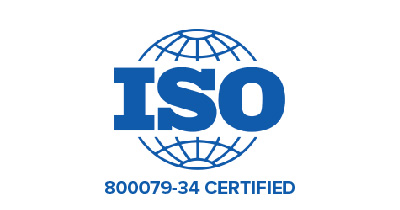By Dalibor Pokrajac
The prevalence of IT technologies and systems in the healthcare environment is well known. Equally well understood is the role of medical equipment in delivering and maintaining the quality of patient care. Medical equipment is, together with all other segments of the healthcare enterprise, undergoing rapid transformation in terms of how patient data is collected, analyzed and used to lower the cost of patient care. Changes in this segment of the healthcare enterprise are coming from two main directions:
- Evolving communication technologies allow equipment to report in real time not only measured and observed patient data, but also their own status.
- Information collected from each piece of equipment is being analyzed and shared in the context of data generated by other equipment and systems, both within the facility and beyond. This automated collaboration among various systems opens the door for significant improvements in quality and cost of services delivered to a patient.
Managing hundreds, or even thousands of pieces of equipment is never an easy task. When that equipment is as diverse as medical equipment can be, this becomes a formidable challenge. Hospitals have been facing this challenge long before equipment became as sophisticated as it is today. Advancements in equipment capabilities to produce and deliver larger amounts of data mean that much more information needs to be processed and analyzed.
It also means that at some point, decisions must be made relevant to this analyzed data. In many cases, a decision-making process relevant to a patient’s clinical status requires mandatory human involvement due to a range of reasons, from technical capabilities of the machines making a clinical decision to legal and ethical concerns about such actions. However, the decisions that need to be made relevant to the technical status of medical equipment are less contentious, with the complexity of decision-making significantly lower.
This increase in equipment capabilities to report their technical status on one side, and the relative simplicity of decisions to be made on the other, presents an opportunity. Automating the technical aspects of equipment management reduces the burden on biomed staff to manually collect and manage the technical status of medical devices from different sources, which is not only time-consuming, but also less reliable and prone to errors.
Interoperability Challenges with EMR and CMMS Systems
Medical equipment vendors often provide their own centralized software platform that collects data from their devices, enabling tracking of the equipment’s technical status and remote management of each device. The diversity of equipment and systems required to provide clinical care for a patient is such that hospitals have long recognized that observing and managing patients and the equipment associated with each patient from many diverse systems, is not practical, or even possible. This is why hospitals began adopting Electronic Medical Record (EMR) systems, which provide the means to collect and centralize information about each patient’s clinical status. This is also the reason why hospital biomed departments started adopting Computer Maintenance and Management Systems (CMMS) to manage the equipment from one centralized platform.
One of the important challenges associated with the use of EMR and CMMS systems is interoperability between various healthcare systems, which report data, and EMR or CMMS systems, which consume data. Traditionally, the interoperability was ensured by more or less proprietary integrations between disparate systems. Besides being relatively difficult to develop, due to the variety of integration technologies used by different systems, these proprietary integrations often don’t provide certainty for the healthcare facility about the quality and level of the integration, which is usually ensured by independent certification and test bodies. As the complexity of the technologies increase, and the number of systems in a typical hospital grows, this problem of interoperability is more acute.
IHE Profiles (MEMLS, MEMDMC) to the Rescue
Realizing this need for interoperability, governed by independent and trusted bodies, Integrating the Healthcare Enterprise (IHE) has developed various integration “profiles” that enable computerized systems and equipment to share data utilizing protocols already commonly used in healthcare, such as HL7 or DICOM. The profiles define how to compose the messages relevant to a particular use case, so they can be interpreted by any other system that claims compatibility with that same profile. Besides specifying the profiles, IHE also provides the means to test and certify the compliance of each system with a particular profile. This testing and formal certification occurs once a year, at the event called Connectathon.
Several such profiles have been developed by the IHE PCD working group over the last 12 years that enable sharing of clinical and technical data between the medical devices and systems interested in the utilization of this data. Newer profiles are MEMLS and MEMDMC. The MEMLS profile allows reporting of the location of people and assets by Real Time Location Systems (RTLS) to other hospital systems such as EMR or CMMS, while the MEMDMC profile allows reporting of the technical status of medical equipment, such as their device identification, hardware/software configuration, preventive maintenance schedule, power management and more.
Once information about each connected piece of equipment (regardless of equipment vendor) is available in real time in systems that manage the equipment (RTLS and CMMS systems), it becomes relatively easy to automate decisions and responses, in terms of automatic equipment enrollment, alerting biomed and medical staff when the actions need to be taken, or even to automate actions to ensure proper equipment operation.
The greatest importance of integration profiles such as MEMLS and MEMDMC is in their ability to allow seamless sharing of information between data reporting devices/systems and systems that consume, process and present such data. This removal of communication barriers and ambiguity allows each technology provider to focus on its own inherent system benefits, for the purpose of providing better patient care to their end customer, the healthcare facility and ultimately – the patient.
Originally published in MedTech Intelligence on October 23, 2017. Click here to view.


